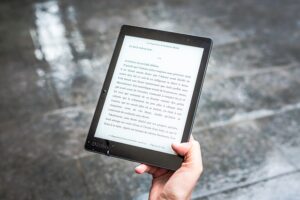Science indicates 75 percent of parents wish their children would read for fun more. Yet most parents stop reading aloud once the child learns to read on their own. A report from Scholastic suggests reading out loud to kids throughout their elementary school years inspires them to become bookworms, reading five to seven days per week for fun. More than 40 percent of frequent readers ages six to 11 were read to at home, compared to 13 percent who did not read for fun.
At any age, reading increases intelligence.
“The more that you read, the more things you will know. The more that you learn, the more places you’ll go.”
—Dr. Seuss
Diving into a good book opens up a whole world of knowledge. An increase in vocabulary is an obvious result, but it also leads to higher scores on intelligence tests. When children read for fun, it also leads to higher intelligence later in life.
Reading boosts brainpower.
Not only does regular reading make us smarter, but it also increases actual brainpower. Reading regularly improves memory function. Think of it as exercises for the brain. Aging often goes hand-in-hand with a decline in memory and brain function, but regular reading helps slow the process, keeping minds sharper longer, according to research published in Neurology.
Readers are more empathetic.
Being immersed in a story world, caring about characters, helps us relate to others. And so, we’re more aware of another person’s emotions, according to research published in Science Magazine. Interestingly, fiction has a greater impact on empathy than nonfiction.
“Understanding others’ mental states is a crucial skill that enables the complex social relationships that characterize human societies,” David Comer Kidd and Emanuele Castano wrote of their findings.
Reading may help fight Alzheimer’s disease.
Those who engage their brains through reading are 2.5 times less likely to develop Alzheimer’s disease than those who spend their downtime on less stimulating activities like television. Research suggests exercising the brain helps reduce the risk of developing other brain diseases, as well.
Reading reduces stress.
A 2009 study by Sussex University showed reading may reduce stress by as much as 68 percent.
“It really doesn’t matter what book you read, by losing yourself in a thoroughly engrossing book you can escape from the worries and stresses of the everyday world and spend a while exploring the domain of the author’s imagination,” cognitive neuropsychologist David Lewis told The Telegraph.
Reading helps us relax.
There’s a reason snuggling up with a good book sounds so appealing. Because it is! Reading washes away the stressors of the day as we melt into the pages of a good book.
Reading fiction for fun.
Readers of fiction have increased creativity, empathy, and emotional intelligence. Losing ourselves in a fictional character’s experiences make us more open-minded and allow us to spend time in someone else’s shoes. Thus, readers become better humans than non-readers.
Reading supports self-improvement.
Readers support lifelong learning. One of the best ways to do that is to pick up a book and learn something new. Waving at readers who prefer nonfiction!
In general, read is good for our wellbeing.
Some of us read to escape reality or imagine worlds beyond our own. Some read to learn new skills—cooking, crafting, creativity—or about real people who intrigue or inspire us. Some read thought-provoking books, some dive into futuristic worlds beyond our imagination. Whatever the reason that brings us to the page, reading is one of the best forms of self-care.
Is reading contagious?
Absolutely! Rather than rattle off statistics, I’ll pose a question. How many books have you bought based on word of mouth? When we see another reader all excited about a new book, we want to feel that way, too. So, what do we do? We check out the book.
When children see their parents reading for fun, it plants the seed for them to become lifelong readers, as well. In adults, if one partner pleasure reads several times per week, it lights a spark in their significant other. My husband never read for pleasure till he married me. When he first took the plunge, he devoured more books per week than I did. Over the years as he built and ran his small engine business, he had less time to read. But he dives between the folds whenever possible. Why? Because he sees how much I enjoy reading, and it’s contagious.
TKZers, why do you read? Does your partner read? Do your kids read? What’s the best thing about reading for you?
 She may be paranoid, but is she right?
She may be paranoid, but is she right?
A string of gruesome murders rocks the small town of Alexandria, New Hampshire, with all the victims staged to resemble dead angels, and strange red and pink balloons appearing out of nowhere.
All the clues point to the Romeo Killer’s return. Except one: he died eight years ago.
Paranoid and on edge, Sage’s theory makes no sense. Dead serial killers don’t rise from the grave. Yet she swears he’s here, hungering for the only angel to slip through his grasp—Sage.
With only hours left to live, how can Sage convince her Sheriff husband before the sand in her hourglass runs out? Preorder on Amazon for $1.49
*Though HALOED is Book 5 of the Grafton County Series, it can easily be read as a standalone.

 A novel’s opening chapter makes a promise, a secret vow that says, “This is what you can expect from me.”
A novel’s opening chapter makes a promise, a secret vow that says, “This is what you can expect from me.”